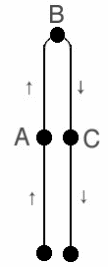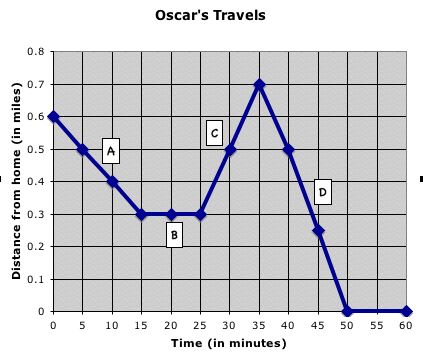Teacher Science-for-Teaching Interview
Understanding Science Professional Development and the Science Achievement of English Learners
Att_REL West UndSci_App D7_ Inst7-TSciforTeachIntervw_8.16.07
Teacher Science-for-Teaching Interview
OMB: 1850-0855
Understanding Science Project - Instrument 7
Teacher Science-for-Teaching Interview
Post Instruction
Force and Motion 2007-08
Date: |
|
Interviewer: |
|
Teacher: |
|
School: |
|
IMPORTANT:
In order to keep teachers’ data confidential, this cover sheet with your name will be removed upon receipt by the research staff, leaving only your ID number of the interview. This cover sheet will be stored in a locked cabinet, separate from the completed interview.
Enter Site Number and Teacher ID Number here and on the next page.
Site Number: Teacher ID Number: T
According to the Paperwork Reduction Act of 1995, no persons are required to respond to a collection of information unless such collection displays a valid Office of Management and Budget (OMB) control number. The valid OMB control number for this information collection is xxxx-xxxx. The time required to complete this information collection is estimated to average 60 minutes per response, including the time to review instructions, search existing data resources, gather the data needed, and complete and review the information collection. If you have any comments concerning the accuracy of the time estimate(s) or suggestions for improving this form, please write to: U.S. Department of Education, Washington, D.C. 20202-4651. If you have comments or concerns regarding the status of your individual submission of this form, write directly to: Rafael Valdivieso, U.S. Department of Education, 555 New Jersey Avenue, NW, Room 506E, Washington, D.C. 20208.
Responses to this data collection will be used only for statistical purposes. The reports prepared for this study will summarize findings across the sample and will not associate responses with a specific district or individual. We will not provide information that identifies you or your district to anyone outside the study team, except as required by law.
Teacher Science-for-Teaching Interview
Post Instruction
Force and Motion 2007-08
Date: |
|
Interviewer: |
|
Grade level: |
|
|
|
Materials needed
handouts
2 pens
tape recorder or digital recorder with batteries and/or power source
[if tape recorder only] microphone (and foam mic mattress if possible)
labeled and blank tapes, if needed
Before starting to tape
Do a sound test
Begin here
[Introduce yourself.]
The
purpose of this interview is to give us an opportunity to learn about
your experience teaching force and motion. We realize that these
topics are sometimes difficult for students and we would like to ask
you a few questions about your approach.
I’d like to record this interview. Is that okay with you?
Please let me know if you want the audio/tape recorder stopped at any time for any reason.
Record starting time: __________
[Start the tape, give your name, the name of the interviewee, and the date. For example, “This is Joan talking with Mayumi about teaching force and motion on September 15, 2020.]
General interviewer instructions
During the interview, make use of general follow-up prompts, like: “Tell me more about that,” and “How exactly do you do that?”
Record the time (and counter number, if applicable) at the points indicated in the protocol.
I’d like to start by asking you a bit about how the force-and-motion unit went. You did teach a force and motion unit this year, correct?
If yes:
With how many classes? ____________
What grade or grades did you teach? ____________
When during the year did you teach the unit? ____________
About how many weeks did you spend on the unit? ____________
For approximately how many lessons or hours a week did you teach the unit?____________
What curriculum materials did you use, if any?
How many identified ELs do you have in your class?
About how many of your students would you say are challenged by the language demands of science?
[If applicable] In general, how well do the ELs in your class do academically compared to the students who have English as a first language?
Did you teach a force -and -motion unit before this year?
If yes: [For all of the following, probe for reasons for differences or changes, what they were trying to accomplish with those changes, what worked and didn’t work.]
How did teaching it this year compare to previous years?
What changes, if any, did you make in the topics, activities, or objectives you had for the unit?
What changes, if any, did you make in what the students talked about or how they worked together?
In what ways, if any, did your taking the WestEd course influence your teaching of the force and motion unit?
What tends to be particularly difficult for your students/students at your grade level when learning about force and motion? [Probe for more difficulties when students are learning about how force and motion are related.]
Compared to other topics in middle school science, what is there about force and motion that is particularly challenging for English learners?
For students at your grade level, what are the two or three most important things for them to learn in a unit on force and motion? [Probe for teacher’s own ideas and knowledge of the standards].
Let’s look at some questions we might ask students about force and motion.
Suppose students were in the middle of a unit on force and motion, and their teacher gave this quiz to understand what students were learning. [Give interviewee Teacher Handout #1, “Forces on a Soccer Ball”, with answers.]
In your force-and-motion unit, what lessons and activities do/will you do to help students understand a problem like this?
[Probe for details of materials and representations, examples, and sequences of activities.]
This [the handout] is one way a student might answer the questions (saying there are no forces on the ball). How would you interpret this answer and explanation? What do you think the student understands and does not understand about forces and motion, based on this response?
What do you typically cover after those lessons/activities?
Why do you teach the lessons in that order?
[Give interviewee Teacher Handout #2, “Oscar’s Travels”.]
Here’s another quiz question. This one asks the student to describe the travels of a dog, Oscar, whose distance from home is plotted against time in this graph.
What have you done in class to help your students learn to interpret this kind of graph, and to describe the motion in words?
During the lesson(s), how do you know, or find out, whether the lesson is working well? [Probe how they monitor student understanding, what is considered evidence of student understanding.]
What would you expect students to include in their answers to this kind of question?
What are some strategies you might advise a beginning teacher to try to help English learners understand and do well on this kind of problem? [Probe until can’t think of any more.]
As part of a continuing education course you are taking, you are asked to observe an eighth grade class during a force and motion unit, and write up your observations on it afterward. At the beginning of the class, a small group of students (3-4) is at each table. The teacher gives each group a set of materials (a marble, stopwatch, yardstick, wooden ramp, and a protractor for measuring angles).
In front of the class the teacher gives the students instructions—they are to work together and figure out how to make the marble roll three feet in fewer than 2 seconds. As the groups work on the problem, the teacher walks around, checking that the students are focused on the task and answering any practical questions they may have. Students are clearly engaged in the task.
Once a group gets the marble to roll at the right speed, the teacher congratulates them, asks them to put away the materials, and gives them the remaining time to work on their homework. At the conclusion of the period, all of the groups have been able to finish the task. The teacher turns to you at the conclusion of the class and says, with a smile, “This is a great activity. Now my students really understand how speed is related to the angel of an inclined plane!”
Do you agree with the teacher’s conclusion? Why or why not? What do you think the students learned?
What are three suggestions you could make to help the teacher find out what the students understood?
[Probe for what the teacher took as evidence of understanding and whether it was sufficient.]
Here’s another question. This one involves a water balloon being thrown up in the air. [Give interviewee Teacher Handout #3, “Balloon Throw”.]
What are some of the answers, both correct and incorrect, that your students might give to these questions about the forces on and motion of the balloon?
How do you help students understand the motion and forces in a situation like this?
As a science teacher, what do you want students to understand about the nature of science – about what makes science different from other subjects like math or history?
How do you help students at your grade level learn about the process of doing science? What do you emphasize? [Probe for generating hypotheses, making observations, analyzing results, making arguments based on evidence, the dynamic nature of the process.]
In general, what do you want your students to get out of the force and motion unit—to remember from this course in six months or a year from now?
Are there any further comments you would like to make, either on the professional development course or on teaching force and motion?
Thank you very much!
STOP RECORDER. Record ending time. _____________
Optional: if there’s extra time:
[Give interviewee Handout #4, “Girl on a Scooter”.]
Here’s another question. This one involves a girl riding on a scooter.
What have you done in class to help your students understand the answers to these questions?
Force and Motion Teacher Handout #1
Forces on a Soccer Ball
A soccer ball is lying on the ground.

1. a. Describe in words or draw a diagram with arrows to show all of the forces acting on the ball.
There are no forces up or down on the ball.
1. b. Use this space to explain your answer. You may use words, diagrams, or symbols in your explanation.
I know there are no forces because the ball isn’t moving up or down.
Force and Motion Teacher Handout #2
Oscar’s Travels
When Tomas was at the park, his dog Oscar jumped out of the car and went for a walk. This graph shows the distance Oscar was from home in the hour after he escaped.
|
|
Oscar changed speed and direction, so there were four parts to his walk – Parts A, B, C, and D. 2. Describe in words Oscar’s travels for each part of the hour shown in this graph.
|
Force and Motion Teacher Handout #3
Balloon Throw
A water balloon is thrown up and falls down as shown.

3. a. At Point A, what forces are acting on the balloon?
3. b. At Point B, what is the balloon’s velocity?
1 The balloon is moving upward at the same speed at which it was thrown.
2 The balloon is moving upward more slowly than it was thrown.
3 The balloon is not moving up or down at point B.
4 The balloon is moving downward.
Force and Motion Teacher Handout #4
Girl on a Scooter
Time (in minutes) |
Position (in kilometers) |
0 |
0 |
20 |
2 |
40 |
0 |
60 |
-2 |

4. a. At point B, the magnitude of the girl’s velocity is:
1 1.0 km/minute
2 0.1 km/minute
3 -1.0 km/minute
4 -0.1 km/minute
5 0.0 km/minute
4. b. The girl’s velocity:
1 Changes between Time 0 and Time 60.
2 Does not change between Time 0 and Time 60.
4. c. Please explain why you think the girl’s velocity did, or did not, change between Time 0 and Time 60.
| File Type | application/msword |
| File Title | Interviewee____________Interviewer____________Date__________ |
| Author | Mayumi Shinohara |
| Last Modified By | Katrina Ingalls |
| File Modified | 2008-01-04 |
| File Created | 2008-01-04 |
© 2025 OMB.report | Privacy Policy
